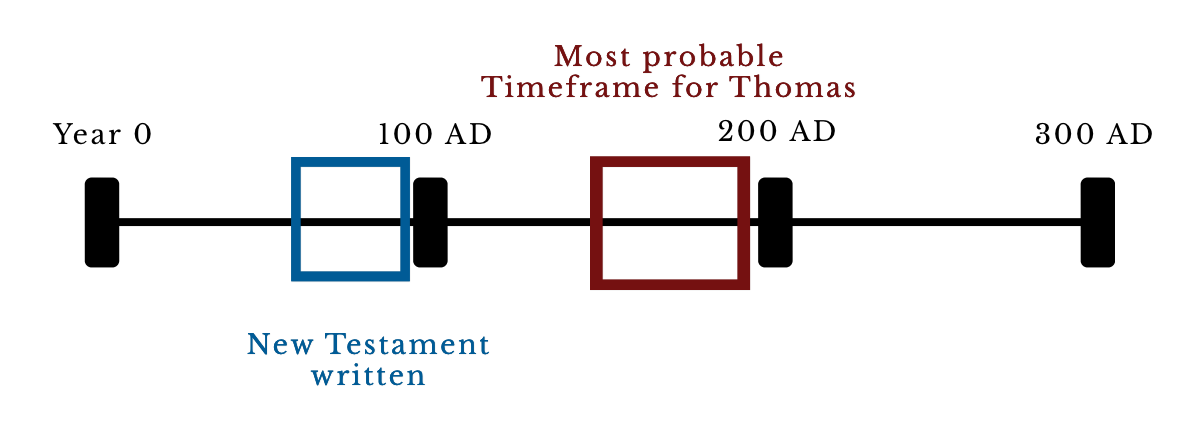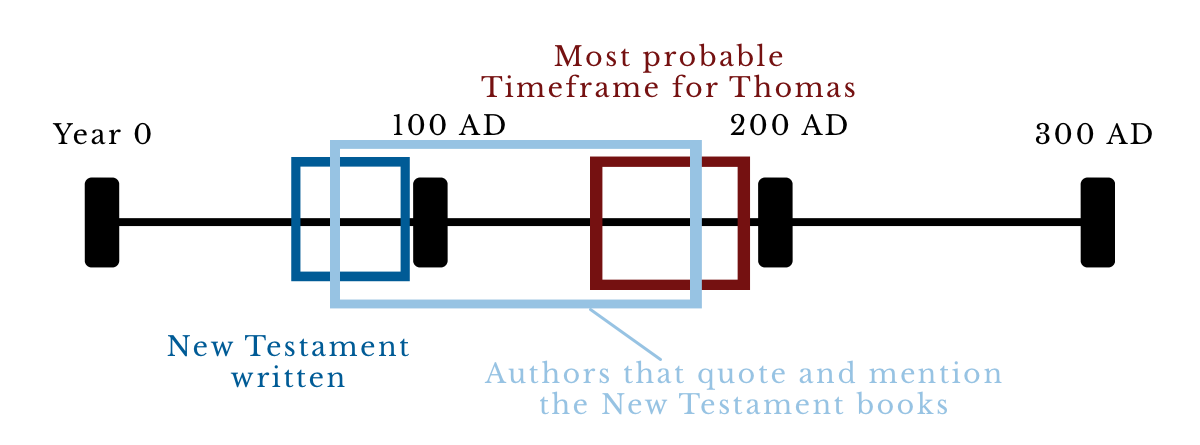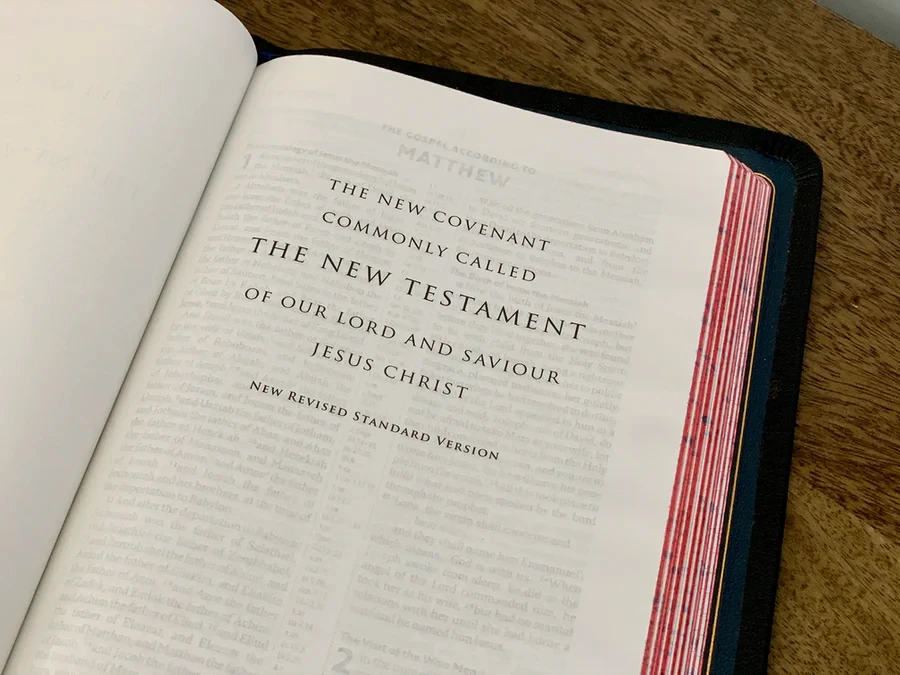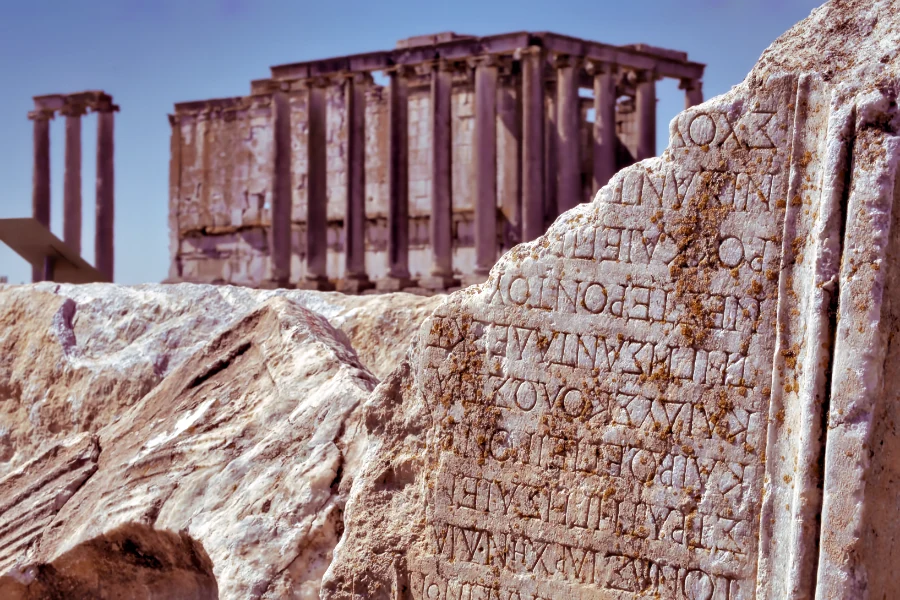Have you ever heard of the Gospel of Thomas? It’s one of the many gnostic gospels out there. Unlike the canonical New Testament, which includes only 37 sayings attributed to Jesus, the Gospel of Thomas has a whopping 114 sayings! What’s even more intriguing is that many of these sayings are unique to this gospel and can’t be found in any other gospels.
Now, let’s not confuse the Gospel of Thomas with the Infancy Gospel of Thomas. The latter is a completely different work that tells stories of Jesus performing miracles and even taking lives. It’s quite different from what we find in the Gospel of Thomas, which focuses more on parables about the kingdom of God, similar to what we see in the Hebrew Bible.
Interestingly, the Gospel of Thomas doesn’t really mention the miracles of Jesus, the son of Joseph (or as they would say in Aramaic, Yeshua ben Joseph). It’s all about the sayings and teachings. Quite fascinating, isn’t it?
Gospel of Thomas PDF
The Numerations in the sayings of Thomas are enumerated by the modern editors to give it some structure and easier navigation. In the manuscript itself, there are no enumerations.
Download or open the file in a new browser window and you can read the sentences separately.
Where was the gospel of Thomas found?

Let me share an intriguing story with you. Back in 1945, in the fascinating land of Nag Hammadi, Egypt, something incredible happened. A Beduin named Mohammed Ali, along with his brother, stumbled upon a remarkable discovery. Can you guess what it was? Well, hold onto your seat because it’s quite extraordinary. They uncovered a collection of ancient texts, dating all the way back to the year 300s AD!
Now, this collection, known as the Nag Hammadi collection, is a treasure trove of Christian writings from the same area. It’s like opening a window into the past, giving us a glimpse into the thoughts and beliefs of people from centuries ago.
Isn’t it fascinating to think about how these texts were preserved and hidden away for so long, only to be found by chance? It’s like a real-life adventure unfolding before our eyes.
So, there you have it, a little snippet of history from Nag Hammadi. It’s incredible how these ancient writings can still captivate our imagination today.
When was the gospel of Thomas originally composed?

Some Scholars think The origin of the Gospel is Early
So, there are some scholars who believe that the Gospel of Thomas was created around the early 70s AD, while others think it could have been written as late as 150 AD. By the year 150, we do have evidence that people were writing about it. Now, here’s an interesting perspective from scholars like Elaine Pagels and John Dominic Crossan. They suggest that the Gospel of Thomas may have originated from oral traditions and later been written down, undergoing several revisions along the way. Pagels and Crossan also argue that it was likely written early in Christian history. One reason for this is that the text of Thomas consists of simple sayings, similar to the Gospel of Mark, which happens to be the shortest of the four canonical gospels. Scholars generally believe that people tend to add text rather than remove phrases (it’s just how our brains work), which is why Mark is considered the earliest written gospel. This could imply that Thomas has its roots in an early period as well. However, critics point out that just because a gospel is short doesn’t necessarily mean it was written early. It’s an intriguing topic to explore!
SCENARIO 1 : Thomas was written before the New Testament

Most experts date the creation of Thomas later
The writer(s) of the Gospel of Thomas appear to have been acquainted with various quotes or paraphrases from the New Testament, including passages from:
- The Gospel of Mark
- The Gospel of Luke
- The Gospel of John
- The Book of Acts
- The Epistle to the Romans
- The First and Second Epistles to the Corinthians
- The Epistle to the Galatians
- The Epistle to the Ephesians
- The Epistle to the Colossians
- The First Epistle to Timothy
- The Epistle to the Hebrews
- The First Epistle of John
- The First Epistle to the Thessalonians
- The Book of Revelation
Let’s dive into the similarities between the writings of Thomas and the New Testament, which could mean that either the author of Thomas was familiar with the New Testament writings or they were both written around the same time. This would suggest a timeframe of around 40 AD, shortly after Jesus’ supposed death.
Now, let’s consider the impact of dating Thomas early. It’s important to look at different scenarios and approach this from a fresh perspective, don’t you think?
So, when we think about it, it’s fascinating to see how these similarities between Thomas and the New Testament writings could shed light on their connection. By exploring different angles, we can truly grasp the significance of dating Thomas and its implications. It’s like unraveling a mystery!
Now, let’s take a moment to consider the bigger picture and see where this takes us. It’s exciting to think about the possibilities and the insights we can gain from examining these texts closely.
Scenario 2: Most Likely what Happened

Thomas must have been popular very early on for different writers to build on it.
Most probable Timeframe for the Creation of the Gospel of Thomas

There is a scholarly debate surrounding the dating of the Gospel of Thomas in relation to the other books of the New Testament. While it is unlikely that Thomas was written before the Gospel of Mark, it is more plausible that the author of Thomas drew upon multiple works by the second century. This can be inferred from the fact that many later writers allude to the New Testament books but do not mention Thomas, suggesting that the New Testament documents were written prior to the Gospel of Thomas.
Daniel B. Wallace, a prominent scholar, argues that the absence of any mention of Thomas by second-century authors would be highly unusual if this gospel had been in existence for fifty or sixty years before AD 100. This is especially noteworthy considering that Thomas was supposedly extensively used by several New Testament authors.
Additionally, evidence from the Gospel of Thomas itself supports the idea that the Gospels of Peter and Matthew had already been circulating for a significant period before Thomas was written. Thomas 13 (2) references these Gospels, indicating their preexistence.
In conclusion, the dating of the Gospel of Thomas in relation to the New Testament books remains a topic of scholarly discussion. However, considerations such as the lack of references to Thomas by later writers and the internal evidence within the Gospel itself suggest that the New Testament documents likely predate the Gospel of Thomas.
In which language was the Gospel of Thomas written?

The language in which the Gospel of Thomas was originally composed remains a subject of scholarly debate. While the complete script is written in Coptic, an ancient Egyptian language, this discovery is considered rare and significant. Without this finding, the full content of the Gospel of Thomas would remain unknown. Many scholars argue that the Gospel of Thomas was authored by Syrian Christians, who belonged to an early sect of Christianity. It is believed that the script eventually made its way to Egypt and was later translated into Coptic. Alternatively, some suggest that the Gospel of Thomas may have been initially written in Greek, as two fragments have been found in other locations. You may also be interested in my article: In which language is the New Testament written.
The Secret Teaching of Thomas changed over time

The Gospel of Thomas has undergone significant changes over the course of history. Two Greek fragments of Thomas, dating back to 200 AD, contain approximately 20% of its content. These findings differ greatly from the complete Coptic version discovered in Egypt, with a time gap of 100-150 years between them.
The sayings of Thomas were likely part of a longer narrative, possibly a compilation of various stories that were pieced together over time. The available evidence suggests that the sayings of Thomas predate the two Greek manuscripts and the references made by external writers in their works. For instance, Clement of Alexandria, a writer from the second century AD, mentions a Gospel called the Saying(s) of Jesus or the sayings, which implies an earlier existence of Thomas. The first writer to mention Thomas specifically was Hippolytus of Rome (c. 170 – c. 235 AD), who criticised it harshly. He refers to a group called “the Naassene” and even quotes a line from Thomas. Later authors like Cyril of Jerusalem (c. 313-386 AD) also expressed strong disapproval of Thomas and emphasized the acceptance of only four Gospels by mainstream Christians of the time. These writings indicate that, by this point, the four Gospels included in the Bible were predominantly regarded as authoritative.
The Gospel of Thomas likely existed in various versions and underwent modifications throughout the centuries.
John P. Meier
Eventually, as the doctrine of the Roman/Orthodox church solidified and became the official state religion under Emperor Constantine, a decision was made in the 16th century regarding which books would be included in the Bible to form the canon we have today. However, Thomas had already fallen out of favor with Christian communities long before this. The Gospel was lost and only rediscovered in the last century, although we were aware of its existence from other authors (as mentioned earlier) who criticized it harshly and labeled it as heresy.
In summary, the Gospel of Thomas has seen significant changes over time, with different versions and modifications throughout the centuries. It was not included in the final canon of the Bible, likely due to its controversial nature and disapproval from influential Christian figures.
Gospel of Thomas in Relationship to the New Testament

The Gospel of Thomas presents a unique perspective that diverges from the theology found in the New Testament canon. While the New Testament emphasizes Jesus as the way, the truth, and the life, and emphasizes his role in atoning for humanity’s sins and fulfilling Messianic prophecies, the Gospel of Thomas portrays Jesus more as a divine being or teacher, resembling a Greek philosopher rather than a Jewish rabbi. This divergence in portrayal reveals the evolution of Christian beliefs over time.
Notably, Dr Bart Ehrman compares the Gospel of Thomas with the synoptic Gospels, highlighting the significant common ground between them. Despite the notable differences, there are also noteworthy similarities that can be observed, further enriching our understanding of the complex tapestry of Christian beliefs.
In the study of the relationship between the Gospel of Thomas and the New Testament, Professor Craig Evans proposes an alternative perspective. Rather than considering the possibility of Thomas influencing Matthew, Evans suggests that Thomas may have actually copied from Matthew. To support this claim, Evans provides evidence by translating Thomas into the Syriac Matthew, further reinforcing the likelihood of Thomas drawing from Matthew’s text.
It is important to analyse the relationship between the Gospel of Thomas and the New Testament as it sheds light on the origins and influences of these texts. By considering Evans’ viewpoint, we gain a fresh perspective on the potential sources and interconnections within early Christian literature.
The Sayings of Jesus are different to the synoptic Gospels
In the Gospel of Thomas, specifically in Saying 2, a text that is not included in the Bible, we encounter a distinct portrayal of Jesus’ teachings. These sayings, known as the Sayings of Jesus, present a unique perspective that sets them apart from the synoptic Gospels found in the Bible.
Who wrote the gospel of Thomas?

the Author is claiming to be the brother of Jesus
The authorship of the Gospel of Thomas has been a subject of scholarly debate, with Dr. Bart Ehrman offering his assessment on the matter. According to Ehrman, the Gospel claims to be authored by Didymos Judas Thomas, with the names “Didymos” and “Thomas” both meaning twin in Greek and Aramaic. Ehrman’s interpretation is based on a careful analysis of scriptures from the New Testament and other relevant texts.
In the Gospel of Mark, which is believed to be the oldest Gospel by many scholars, chapter 6 verse 3 in the International Version provides further insight. Ehrman’s assessment takes into account these scriptures and other sources as he seeks to determine the authorship of the Gospel of Thomas.
Determining the true author of the gospel of Thomas poses a challenge due to its anonymous nature and the limited literacy rates during that time period. It is crucial to approach this assessment with caution, particularly when considering individuals from lower-class backgrounds such as Jesus’ family. Their evidence, primarily recorded in Greek rather than their native Aramaic language, may have been distant from their understanding many decades or even centuries later.
The question of whether Thomas was the brother of Jesus has been a subject of speculation among scholars, with Ehrman suggesting this possibility. However, it is important to note that this assumption remains largely speculative. Dr Richard Carrier, on the other hand, proposes an alternative interpretation, suggesting that the term “brother of Jesus” could potentially refer to a spiritual connection rather than a biological relationship. It is crucial to consider multiple perspectives when examining this topic.
Who is the most Likely Author of Thomas?
The Gospel of Thomas is widely believed to have been composed by multiple authors over a span of several decades, according to most scholars. There is a strong indication that the secret teachings of Jesus, found in the Gospel, were written in Syria, as the text contains numerous catchphrases that align more coherently with the Syriac language. Notably, scholar Nicolas Perrin extensively studied the Gospel of Thomas and translated it from Coptic into Syriac and Greek. In his analysis, Perrin identified 502 catchwords that are more likely to have originated from Syriac rather than Coptic or Greek.
Professor Craig A. Evans, asserts that the Gospel of Thomas displays a significant similarity to the late 2nd-century Syrian traditions, while lacking the influence of pre-70 Jewish Palestine. It is widely acknowledged among scholars that the Gospel of Thomas incorporates various Syrian elements, such as its references to Didymos Judas Thomas, a name commonly found in Syrian traditions.
Interestingly, Evans suggests that Thomas appears to have drawn inspiration from the Gospel of Matthew, implying some form of copying or influence. Furthermore, Perrin has observed that Thomas follows the narrative order found in the mid-2nd-century work known as the Diatessaron. This work, authored by Tatian, aimed to harmonize the four gospels of Luke, Matthew, Mark, and John. Notably, Thomas exhibits a similar writing style to the Syriac language used in the Diatessaron. The Diatessaron itself was completed between 160-175 AD, suggesting that the Gospel of Thomas likely reached completion around 200 AD.
Considering the most likely author of Thomas, it is difficult to determine with certainty due to its composite nature. However, the evidence points towards a Syrian influence and the potential incorporation of teachings from Matthew and then Diatessaron.
Why is the Gospel of Thomas so important?
The Gospel of Thomas holds significant importance due to its ability to shed light on the beliefs of the Gnostics. Gnosticism, a spiritual movement during the early Christian era, emphasised the existence of a higher reality beyond the physical world. Gnostics believed that through acquiring specialised knowledge and engaging in specific practices, an individual could access a spiritual realm. The Gospel of Thomas offers a distinctive viewpoint on the life and teachings of Jesus, contributing to our understanding of Gnostic thought. By exploring this text, scholars gain valuable insights into an alternative interpretation of Jesus’ message and the spiritual landscape of the time.
What does the Teaching of Thomas say?

The teachings of Jesus and the hidden wisdom contained within the text of the Gospel of Thomas was believed by the Thomasine Christian church, to hold the key to attaining eternal life. Unlike the traditional Christian belief in the death and resurrection of Jesus, the author of the Gospel of Thomas emphasises the significance of Jesus’s secret teachings as the source of enlightenment and salvation. This perspective challenges the teachings of the church.
In the Gospel of Thomas, Jesus is portrayed not as the embodiment of truth and light, but primarily as a teacher who imparts knowledge to guide individuals towards finding enlightenment within themselves. This differs from the portrayal of Jesus in the New Testament, where he is described as the Light. Additionally, the Gospel of Thomas presents a contrasting view on the importance of fasting and prayers, suggesting that they are not essential for spiritual growth, unlike the canonical texts which emphasise their significance.
The author of the Gospel of Thomas appears more influenced by Greek philosophical thought rather than the teachings of an early Jewish Rabbi. Furthermore, the text reflects a sexist attitude towards women, which was prevalent during that time. In contrast, the canonical gospels present a more inclusive view of women, granting them equal access to divine revelation.
One notable contradiction between the Gospel of Thomas and the New Testament is the emphasis on faith. While the New Testament suggests that faith in Jesus enables believers to accomplish anything, the Gospel of Thomas instead encourages individuals to use their own faculties, such as their eyes, to perceive the hidden truths. This discrepancy has been observed in the fragments of the Oxyrhynchus papyrus, a type of ancient papyrus that has preserved portions of the Gospel of Thomas.
The authenticity of the Gospel of Thomas has been a subject of scholarly debate. While consensus has not been reached, most scholars consider it to be an authentic early Christian text. The Gospel of Thomas offers unique and intriguing teachings that are not found in the canonical gospels. Some scholars propose that these teachings may reflect early Gnostic beliefs, while others suggest that they represent an earlier form of Christianity that was suppressed by the mainstream church. Regardless of its origins, the Gospel of Thomas remains a valuable and captivating piece of Christian literature.
In summary, the Gospel of Thomas presents alternative perspectives on the teachings of Jesus, highlighting the importance of his secret wisdom rather than his death and resurrection. It offers distinct teachings on fasting, prayers, and the role of women, which differ from the canonical texts. The discovery of the Gospel of Thomas in Oxyrhynchus papyrus fragments adds to its historical significance. While the authenticity and interpretation of the text continue to be debated, it remains a valuable and thought-provoking contribution to the study of early Christianity.
The Kingdom of God is inside you

The Gospel of Thomas, according to Dr. Elaine Pagels, contains mystical sayings with a hidden secret. Those who possess this secret do not require the guidance of a priest, the presence of a church, or even Jesus himself. These individuals, known as Gnostics, were a Christian group who embraced the teachings of Thomas and other non-canonical gospels. The term “Gnosis” refers to an internal knowledge or insight.
Professor Pagels describes the beliefs of the Gospel of Thomas followers as follows:
- Knowing oneself enables the discovery of a path leading back to God. This knowledge pertains to one’s true identity.
- Divine punishment awaits anyone who reveals this teaching.
- Conversely, those who keep this teaching will be rewarded by God.
The existence of these “Gnostic” texts predates the New Testament and the establishment of the Catholic/Orthodox Church. This may be one reason why the Gospel of Thomas was not included in the official canon, as it challenges the necessity of institutionalized religion. The secret of the Gospel of Thomas lies in understanding the secret of the Kingdom of God, which is not a physical place in heaven nor an event in the future. Rather, it is metaphorical and represents a deep spiritual insight. This insight forms a connection to God within oneself. The hidden energy within each individual is divine and omnipresent, responsible for the creation of the world and the universe. It serves as a link to the divine source from which we all originated.
To emphasize this point, Jesus provides an example in the Gospel of Thomas: “I am the light that is before everything, everything comes from me and everything returns to me. Split a piece of wood and I am there. Lift up a rock and you will find me.” This divine energy is present in all things, including rocks, animals, and stars. Understanding and aligning oneself with this spiritual energy eliminates the need for a god or a church.
The Gospel of Thomas is believed to potentially trace back to the original teachings of Jesus himself. During this time, Jesus, like other Rabbis, conveyed secret teachings. The New Testament, written in Greek, refers to Jesus as a Rabbi.
In summary, the Gospel of Thomas highlights the theme that the Kingdom of God resides within each individual. It emphasises the importance of self-knowledge and the recognition of the divine energy present in all things.
The sayings of Jesus according to dr. Bart Ehrman
In the Gospel of Thomas, as interpreted by Dr. Bart Ehrman, there is a profound message about uncovering the truth that empowers the spiritual essence within individuals to transcend the material distractions of our physical world. This text emphasises the significance of exploring a deeper understanding and embracing the divine sparks that reside within each of us. By shedding light on these teachings, Dr. Ehrman aims to provide insights that can guide individuals towards a more meaningful and fulfilling spiritual journey.
“Revealing the truth that allows the divine sparks within you to escape the material trappings of this world”.
Dr Bart Ehrman
Gospel of Thomas Summary
The classification of the Thomas Gospel as a Gnostic Gospel remains a topic of debate among scholars due to certain elements that do not align with the overall narrative. The categorization itself is complex and often lacks clarity and consistency. However, those who believe in the sayings of Jesus found in this gospel perceive Christ as a divine entity who emerged to impart the truth and guide individuals towards salvation. According to this perspective, salvation is attained by those who comprehend the hidden meanings within these teachings. This aligns with the fundamental principles of Gnostic teachings.
The Gospel of Thomas comprises a compilation of sayings attributed to Jesus. While it is not recognised as canonical by the majority of Christian sects, it offers a distinctive viewpoint on early Christian beliefs and provides valuable insights into the teachings and prevailing attitudes of that era.
It is crucial to acknowledge that not all content within the Gospel of Thomas can be regarded as reliable, as the available evidence is scarce and often biased. Nevertheless, it offers an intriguing perspective on the early Christian worldview. Scholars hold differing opinions regarding various aspects, including the writing’s date and authorship. It is evident that the Gospel of Thomas underwent significant modifications and influences over several centuries. Some sayings may have originated directly from Jesus himself or his like-minded disciples, while others might have been “invented” and ascribed to a particular figure to lend them greater significance. The true origins may forever remain elusive, yet our quest for understanding continues.
In conclusion, the Gospel of Thomas serves as a valuable resource that contributes to our understanding of early Christian perspectives. While it’s classification as a Gnostic Gospel is debated, it undeniably offers unique insights into the teachings of Jesus and sheds light on the spirit of that time. It is essential to approach this text with discernment, considering the limitations of available evidence and the potential influence of various contributors throughout its long history.
Frequently Asked Questions:
The Gospel of Thomas is not included in the Bible due to its reliance on the content found in the canonical Gospels, which are widely regarded as the earliest Christian manuscripts. In terms of theology, the Gospel of Thomas differs from the Gospels in the New Testament. For example, the synoptic Gospels are more inclusive of women in religious practices, allowing them to attain salvation. In contrast, the Gospel of Thomas emphasizes the need for women to adopt a male spirit (114:2 and 3).
Despite its exclusion from the Bible, the Gospel of Thomas holds significant importance as a valuable resource for understanding early Christian beliefs. It consists of a collection of sayings attributed to Jesus during his lifetime.
In conclusion, the Gospel of Thomas is renowned as the most well-known gospel that did not make it into the Bible. Nevertheless, it remains a valuable source of information regarding the early Christian faith.
The Gospel of Thomas faced rejection due to its compilation of sayings, which did not align with the accepted teachings of the Pauline doctrine.
The true identity and nature of Jesus, if he indeed existed, remains a subject of uncertainty and speculation. The complexities surrounding early Christianity present numerous challenges in discerning the most authentic teachings. Rather than a singular version, we have evidence of multiple Christianities, each with their own interpretations. Determining which one aligns closest to the original teachings is a question that remains unanswered, leaving us without a definitive response.
Additionally, there is a question regarding the gospel of Thomas and its classification as heresy.
The Gospel of Thomas is not included in the traditional biblical canon that is widely accepted by mainstream Christian denominations. While it is a significant ancient text, the Gospel of Thomas is considered an apocryphal or non-canonical gospel. It contains a collection of sayings attributed to Jesus, rather than a narrative account of his life and teachings like the four canonical gospels (Matthew, Mark, Luke, and John). The Gospel of Thomas was discovered in 1945 in Nag Hammadi, Egypt, among a collection of other ancient texts. Although it provides insights into early Christian thought and spirituality, it is not considered part of the Bible as recognised by most Christian traditions.
The classification of the Gospel of Thomas as Gnostic is a topic that lacks a definitive answer. While it exhibits several Gnostic characteristics, it also possesses distinct elements that set it apart from traditional Gnostic texts. The majority of scholars tend to categorise the Gospel of Thomas as Gnostic, but it is important to recognise the nuanced differences it presents.
The Gospel of Thomas did not make it into the Bible as it was not included in the finalised version of the Bible in the 16th century.
The authenticity of the gospel of Thomas remains a subject of debate among scholars. While there is no definitive answer, the prevailing view is that it is a copy of an earlier script that likely had multiple authors.
The Gospel of Thomas shares similarities with other early Christian texts, including the Gospel of John and the apocryphal gospels. When exploring books that are similar to the Gospel of Thomas, it is worth considering other early Christian writings and apocryphal gospels. These texts offer valuable insights into the diverse perspectives, teachings, and traditions within the early Christian community. Exploring these texts can deepen our understanding of the historical and theological contexts in which the Gospel of Thomas emerged.
The Gospel of Thomas is a collection of sayings attributed to Jesus. Among these sayings, some of the most popular ones include Thomas 77, 114, 70, 113, 48, and 106. These sayings hold significant value and have garnered attention and interest among scholars and readers alike. The Gospel of Thomas provides a unique perspective on the teachings and wisdom of Jesus, shedding light on his messages and insights. By exploring these popular sayings, one can gain a deeper understanding of the spiritual and philosophical aspects conveyed in the Gospel of Thomas.





